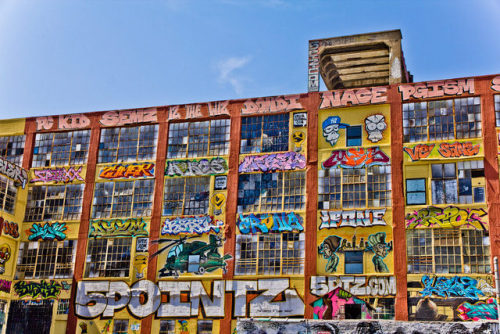UPDATE: In June 2018, a New York judge upheld the $6.75M in damages awarded to graffiti artists in a ruling against developer Gerald Wolkoff, who had destroyed numerous murals at the 5Pointz site in Queens, NY.
The judge’s decision cited the VARA (Visual Artists Rights Act), finding that Wolkoff’s destruction of the 5Pointz murals was a violation of the artists’ rights.
The decision is a landmark ruling for graffiti artists. In an accompanying appendix, the judge cited the opinions of art experts and art publications, noting that it had been “to Wolkoff’s delight [that the art at 5Pointz] was perhaps principally responsible for transforming his crime-infested neighborhood and dilapidated warehouse buildings into what became recognized as arguably the world’s premium and largest outdoor museum of quality aerosol art.”
——
A judge’s order will send to trial a suit by a group of graffiti artists against a real estate owner who destroyed their murals at the 5Pointz site in Queens, New York.
After a four-year battle, Senior US District Judge Frederic Block’s order, filed March 31, 2017, grants the 5Pointz graffiti artists’ right to sue under the Visual Artists Rights Act of 1990.
Curated by a graffiti artist named Meres One (Jonathan Cohen) since 2002, the colorful murals were a reminder of a grittier past in a gentrified neighborhood bustling with new high-rise construction. They attracted tourists by the busload and featured works by artists from as far away as Australia and Japan. Graffiti artists had been plastering the walls with their works since 1993.
When Wolkoff resolved to destroy the buildings to make way for a new residential development, artists brought suit to stop him in order to preserve their artworks, asserting a claim under VARA as well as “intentional infliction of emotional distress,” conversion, and property damage. Their case was thrown out, and, without warning one night during November 2013, the owners whitewashed the murals, erasing, as the artists’ spokeswoman told the New York Times, the work of at least 1,500 artists. The abrupt erasure allowed the artists no time to document or preserve their work.
“The court’s order denying dismissal of our client’s claims is a groundbreaking decision for aerosol artists around the country,” said Eric Down of Eisenberg & Down, the firm that is representing the artists. “The message is that if you destroy art protected by federal law, you will be held responsible for your actions…We are confident that at trial both the artists and their work will be determined to be of recognized stature.”
As Amy Adler, law professor at New York University, observed in a phone interview, “Key in this matter is whether the works are of recognized stature, but the statute doesn’t define recognized stature and there’s not a lot of precedent since it’s not a heavily litigated area like fair use. And it’s not necessarily determined by the criteria that the art world would apply.”
